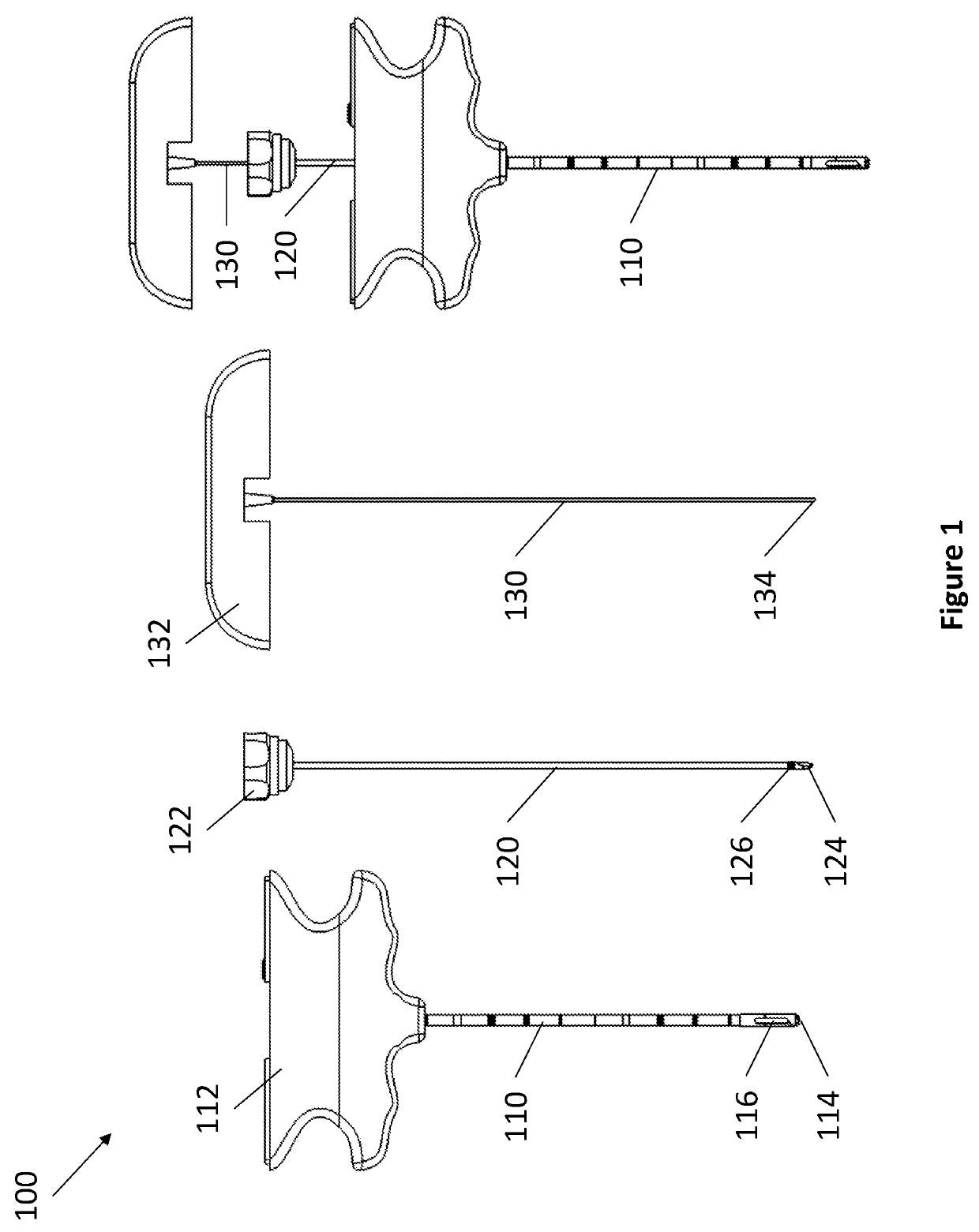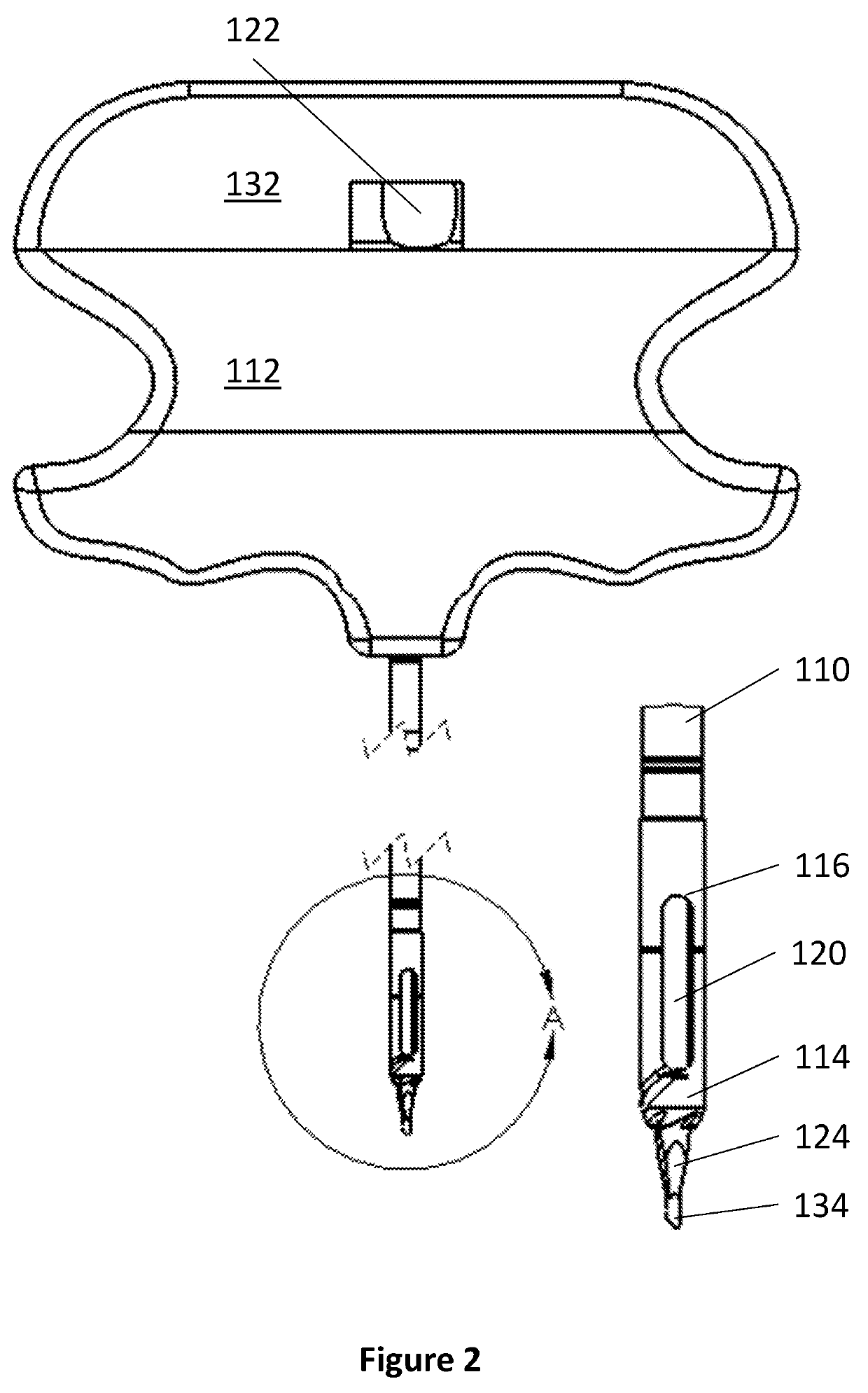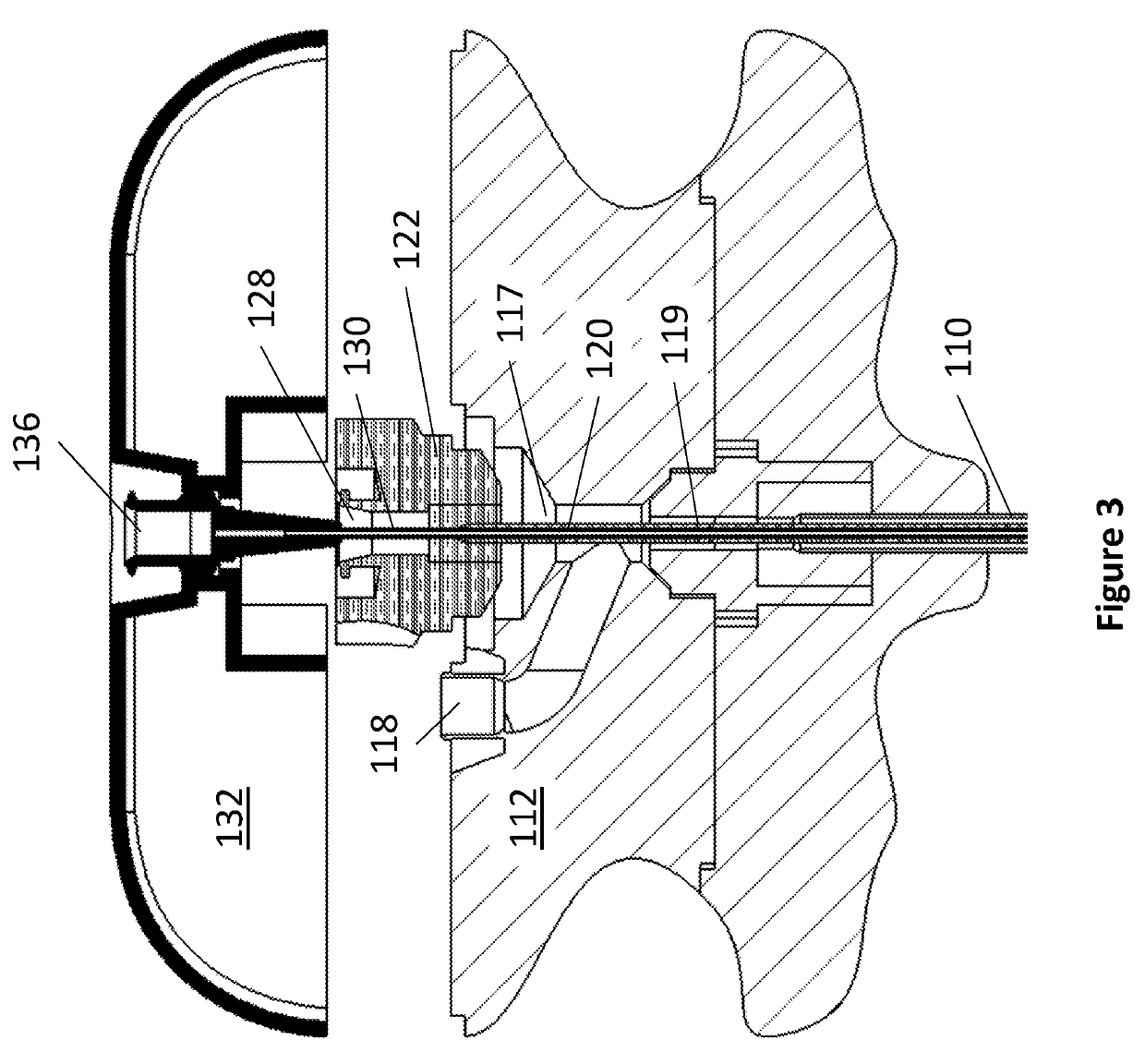Aspiration device
a technology of aspiration device and aspiration tube, which is applied in the field of aspiration tube, can solve the problems of low cell count of desired cell type, low detection limit of up to 27% of samples, and insufficient cells of procedures, so as to increase the yield of stem cells, reduce the pain of bone marrow aspiration, and increase the cost
- Summary
- Abstract
- Description
- Claims
- Application Information
AI Technical Summary
Benefits of technology
Problems solved by technology
Method used
Image
Examples
experimental examples
[0125]The invention is further described in detail by reference to the following experimental examples. These examples are provided for purposes of illustration only, and are not intended to be limiting unless otherwise specified. Thus, the invention should in no way be construed as being limited to the following examples, but rather, should be construed to encompass any and all variations which become evident as a result of the teaching provided herein.
[0126]Without further description, it is believed that one of ordinary skill in the art can, using the preceding description and the following illustrative examples, make and utilize the compounds of the present invention and practice the claimed methods. The following working examples therefore, specifically point out exemplary embodiments of the present invention, and are not to be construed as limiting in any way the remainder of the disclosure.
example 1
ous Method for Pharmacologic Mobilization of Stem Cells
[0127]In a typical bone marrow aspiration (BMA) procedure, when stem cells near an aspiration port are harvested, venous blood inevitably flows in from the sinusoids, contaminating the sample and limiting the stem cells harvested. A slow infusion of a drug into the bone is able to diffuse throughout nearly the entire bone because it is a large interconnected venous space, much like a sponge. Too fast of an infusion merely pushes the drug into the venous system rather than the bone. By first pharmacologically flooding venous spaces of the bone, stem cells remote from the site of aspiration can be harvested with the sinusoidal blood, greatly improving yields beyond the reaches of existing device configurations. Subcutaneous and IV pharmacological methods are too protracted to be useful for the intra-procedural harvesting needed for regenerative medicine and cancer diagnosis. Intraosseous infusion ensures peak concentrations direct...
example 2
Sampling Errors
[0129]In cancer diagnoses, there are three main sources of sample errors. The first source is the “dry tap,” where no marrow can be obtained (6.8% of aspirates). While this can be seen in normal patients, it can represent significant disease, such as when the marrow is so tightly packed with tumor cells that no liquid marrow can be obtained. It can also occur after chemotherapy, when all stem cells in the marrow have been ablated, as well as in fibrotic marrow such as in the condition myelofibrosis. The second source is from aspicular samples (20.6% of aspirates). This is a result of a small sampling area combined with the random distribution of spicule-containing hematopoietic marrow throughout the bone. It happens when the sampling needle is positioned in an area containing fatty marrow rather than the red hematopoietic marrow. This marrow distribution is readily visible on MRI but it would be very burdensome to guide each aspiration with MRI.
[0130]The third source ...
PUM
 Login to View More
Login to View More Abstract
Description
Claims
Application Information
 Login to View More
Login to View More - R&D
- Intellectual Property
- Life Sciences
- Materials
- Tech Scout
- Unparalleled Data Quality
- Higher Quality Content
- 60% Fewer Hallucinations
Browse by: Latest US Patents, China's latest patents, Technical Efficacy Thesaurus, Application Domain, Technology Topic, Popular Technical Reports.
© 2025 PatSnap. All rights reserved.Legal|Privacy policy|Modern Slavery Act Transparency Statement|Sitemap|About US| Contact US: help@patsnap.com



